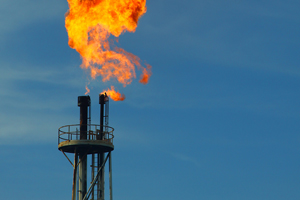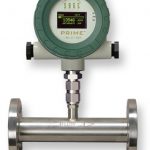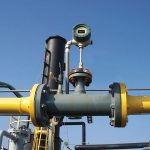How to monitor and measure flare gas flow?
A new standard has emerged, from burning flare gas to recycling it and creating renewable energy, creating the need to monitor and measure flare gas flow.
What is flare gas and gas flaring?
Flare gas is the surplus gas or vapor that is typically burned through a gas flare, also known as a flare stack.
Gas flaring or venting is the process of burning off the combustible gas (flare gas).
What is the purpose of gas flaring?
 The purpose of gas flaring has typically been to dispose of the excess combustible gas or to relieve gas pressure within a process. At one time, when global warming wasn’t an issue, gas flaring became a widely accepted process. There were no incentives given to maximize or recycle the gas being destroyed in the process, nor were there significant concerns related to the environmental impact of the flaring process’s emissions.
The purpose of gas flaring has typically been to dispose of the excess combustible gas or to relieve gas pressure within a process. At one time, when global warming wasn’t an issue, gas flaring became a widely accepted process. There were no incentives given to maximize or recycle the gas being destroyed in the process, nor were there significant concerns related to the environmental impact of the flaring process’s emissions.
The shift from consumption to reduction
Today a different standard is being set. Natural gas is a valuable resource, and efforts to capture and recycle flare gas into renewable energy takes precedence over destroying it. Additionally, increasing pressure from global organizations, federal and even state legislation encourages reducing emissions, and flare reduction is deemed a significant method to achieve the desired goal. By recycling the waste gas, we reduce the carbon dioxide (CO2) footprint, and a source for onsite energy is produced.
The process of gas flaring is commonly used in industries where waste gas is flared. Examples of these operations include oil refineries, well drilling operations (especially offshore oil rigs), wastewater treatment plants, chemical processing plants, natural gas plants, and landfills.
Today, gas flares are subject to stringent regulations, requiring operators to measure, record, and report the amount of flared gases. It is often necessary to monitor flare gas flow and consumption at various points within a complex run of pipes, including the actual flare stack.
Thermal mass flowmeters are an effective way to monitor and measure flare gas flow. One of the advantages of the Sage Metering Insertion Style Thermal Mass Flow Meter is the wide turndown. It can accurately measure extremely low flow typically associated with standard venting and the high flow common in an upset situation. The meter responds quickly to flow changes, low-pressure drop with reproducibility or repeatability, all important factors when selecting the proper instrument for flare gas measurement.
Sage Flare Gas Flow Meter
The Sage Metering flare gas flow meter provides the data needed to comply with many environmental protocols. It also offers a unique in-situ (on-site) calibration check by providing a way to create a no-flow condition. By doing so, the flow meter can be checked to assure it has retained its original NIST Traceable calibration, thereby verifying the meter’s accuracy, confirming the sensors are clean, and that the flowmeter hasn’t drifted. This onsite check eliminates the inconvenience and expense of annual factory calibrations.
As the global, political, and regulatory environments shift from consuming flare gas to flare reduction, new regulations and protocols are being set to ensure that operators are correctly measuring and monitoring flare gas.




